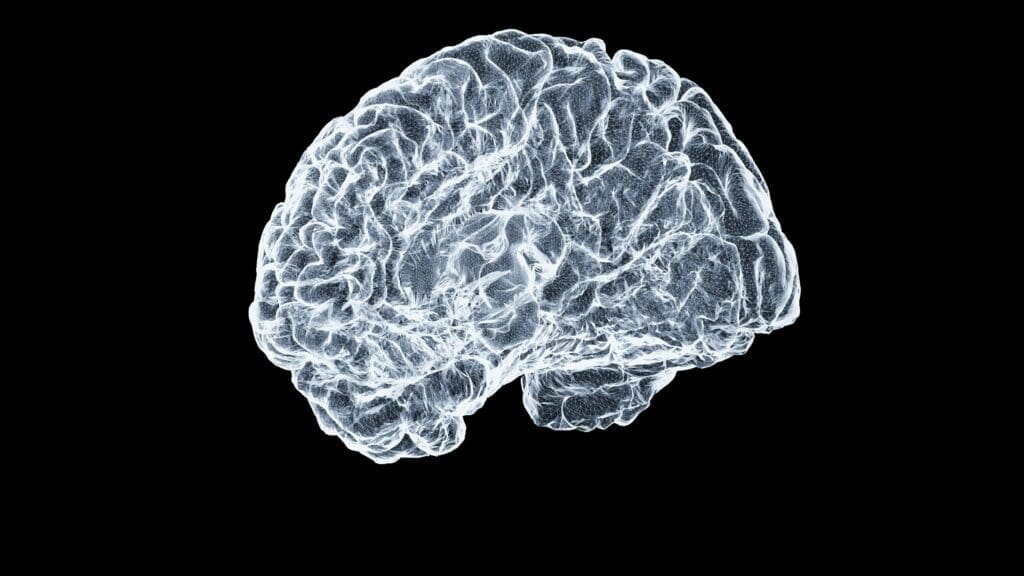Introduction to Homer’s Classes

Homer’s classes represent a distinctive approach to education, rooted in a philosophy that emphasizes the importance of literature and the arts within the curriculum. Originating from the belief that exposure to classical texts fosters critical thinking, cultural awareness, and ethical reasoning, these classes challenge conventional educational frameworks. Unlike traditional curricula that often prioritize standardized testing and vocational training, Homer’s classes focus on developing a deep understanding of human experience through literature-based learning.
A key characteristic of Homer’s classes is their interdisciplinary nature, where literature is integrated with history, philosophy, and the arts. This blend allows students to explore complex themes and ideas, fostering an environment of inquiry and creativity. The core texts studied in these classes are often drawn from classics, providing students with insights into different cultures, historical contexts, and philosophical dilemmas. By engaging with enduring works, students not only improve their literacy skills but also gain a broader perspective on the human condition.
Another significant feature of Homer’s classes is the emphasis on discussion and dialogue. In these classes, students are encouraged to articulate their thoughts and interpretations, engaging in Socratic questioning that promotes deeper understanding and reflective thinking. Teachers act as facilitators, guiding conversations while allowing students to take ownership of their learning process. This method contrasts sharply with the typically more authoritative and structured nature found in traditional educational systems.
Overall, Homer’s classes aim to cultivate a love of learning and an appreciation for literature’s role in society. By moving away from rote memorization and standardized assessments, these classes prepare students for a lifelong engagement with knowledge and the world around them. As we delve deeper into this comprehensive guide, we will explore the various aspects of Homer’s classes that set them apart from conventional educational paths.
The Merits of Homer’s Classes

The educational framework established by Homer’s classes offers numerous advantages that go beyond the traditional academic experience. By immersing students in classic texts, learners not only engage deeply with foundational literature but also cultivate enhanced critical thinking skills. This engagement allows students to explore complex themes, narratives, and moral dilemmas that challenge their perspectives, fostering personal and intellectual growth.
One significant merit of Homer’s classes is the emphasis on interpretative skills. Students are encouraged to analyze and interpret texts, thereby developing a nuanced understanding of literature’s role in shaping human experiences. This approach invites more than mere comprehension; it promotes a dialogue between the text and the reader, enhancing the ability to articulate insights and draw connections to contemporary issues. Through discussions and collaborative projects, learners refine their analytical skills, which are crucial in both academic and real-world contexts.
Feedback from students and educators alike highlights the effectiveness of this educational methodology. Many students report that participating in Homer’s classes has reignited their passion for literature and increased their confidence in expressing their viewpoints. Educators note that students frequently demonstrate a heightened ability to engage with sophisticated material and articulate their thoughts clearly. Such interaction not only enriches the learning process but also prepares students for advanced studies or diverse career paths where analytical proficiency is paramount.
In this sense, the merits of enrolling in Homer’s classes extend well beyond literary analysis. The development of critical faculties and interpretative skills positions students for success in a variety of fields, making Homer’s classes a commendable investment in a comprehensive educational experience.
Comparing Homer’s Classes to Regular Classes

When discussing educational structures, it is imperative to understand the distinctions between traditional classroom settings and Homer’s classes. The core differences often lie in the structure, curriculum focus, teaching methodologies, and ultimately, student outcomes. Regular classes typically follow a standardized curriculum that emphasizes a uniform learning path for all students. In contrast, Homer’s classes are designed to be more adaptable, catering to the unique needs and learning styles of each individual student.
One significant structural difference between the two approaches is the classroom environment. Regular classes often prioritize a more rigid framework, with fixed seating arrangements and scheduled periods that dictate the flow of teaching. Conversely, Homer’s classes promote a flexible layout that encourages collaboration, interaction, and hands-on learning. This flexibility not only enhances student engagement but also accommodates various collaborative learning techniques, setting the stage for more active participation.
Moreover, the curriculum focus in Homer’s classes is centered around interdisciplinary learning, which allows students to draw connections between various subjects. While regular classes generally compartmentalize subjects, Homer’s model fosters an integrated approach that reflects real-world complexities. This integration cultivates critical thinking and encourages students to apply their knowledge in diverse contexts, enhancing the learning experience.
Teaching methodologies used in these classes also diverge significantly. Regular classes may rely heavily on lecture-based instruction where teachers are the primary source of information. In contrast, Homer’s classes prioritize student-centered learning, where educators facilitate discussions and encourage inquiry-based learning. This approach empowers students to take ownership of their educational journey, prompting them to explore topics of interest deeply.
Ultimately, these differences culminate in varying student outcomes. Students in Homer’s classes often display higher levels of engagement, creativity, and critical thinking skills. They tend to be better prepared for real-life challenges, having developed versatile skills that transcend traditional academic boundaries. This comparative analysis underscores the innovative nature of Homer’s classes and their potential impact on student success.
Homer’s Classes vs. AP Classes: A Detailed Comparison

When evaluating educational options, both Homer’s classes and Advanced Placement (AP) classes present unique characteristics that cater to different student needs. Homer’s classes, designed with a focus on personalized learning, often emphasize a more individualized educational experience. This approach allows learners to engage deeply with material at their own pace, fostering a greater understanding of concepts without the high-pressure environment typical of AP classes.
On the other hand, AP classes are structured to simulate a college-level curriculum, providing rigorous academic challenges that can enhance students’ readiness for higher education. These classes often demand a significant amount of critical thinking, analysis, and time management, making them ideal for students who thrive in competitive situations. Moreover, successful completion of AP courses can result in college credit, offering students the opportunity to advance their education more rapidly.
A key factor in determining the suitability of Homer’s classes versus AP classes is the type of college preparation each offers. Homer’s classes tend to create a learning environment that encourages exploration and creativity, which may be beneficial for students who prefer a less traditional approach to education. Conversely, AP classes are better suited for those aiming for highly structured academic pathways, especially for students eyeing competitive colleges that recognize AP coursework as an indicator of college readiness.
Moreover, student engagement varies between the two educational formats. While Homer’s classes might foster a collaborative atmosphere that emphasizes dialogue and discussion, AP classes often prioritize independent work, preparing students for the self-directed study they will encounter in college. In essence, the choice between Homer’s classes and AP classes ultimately lies in the individual learning styles and educational goals of students. Each pathway offers distinct advantages that can align with specific aspirations for academic success.
Is There a Place for Both Homer’s and AP Classes?

The debate surrounding the simultaneous enrollment of students in both Homer’s classes and Advanced Placement (AP) courses presents a challenging landscape for educators, students, and parents alike. These academic tracks serve distinct purposes and provide unique benefits, prompting a closer examination of their potential interplay in enhancing student learning. The opportunity for cross-learning between these two educational frameworks can be significant, allowing students to cultivate both analytical skills and creative thinking.
Homer’s classes primarily focus on developing creativity, critical thinking, and individual expression through literature and arts. In contrast, AP classes are structured to deliver a rigorous, college-level curriculum that emphasizes analytical skills, comprehensive understanding, and preparation for standardized assessments. The juxtaposition of these two educational models creates a rich environment where students can thrive by applying insights gleaned from Homer’s coursework to enrich their understanding of complex materials in AP classes.
Furthermore, the balance between creativity and rigor is essential for student development. Engaging in both categories can foster a multifaceted approach to learning. Students exposed to creative disciplines may develop a deeper appreciation for the texts and subjects introduced in AP courses, while those in AP classes can learn to systematically approach the liberal arts perspective fostered by Homer’s classes. This confluence can enhance their overall academic experience, enabling a well-rounded education that prepares them for future challenges.
However, the implications of scheduling both types of classes must also be carefully considered. Managing academic workload and ensuring that students maintain a healthy balance between study and personal time is paramount. As school administrations thoughtfully design their curricula, they must account for the varying demands of both Homer’s classes and AP courses. In fostering an adaptable educational environment, students can ultimately find themselves better equipped to navigate their academic journeys.
Challenges Faced by Students in Homer’s Classes

Students enrolled in Homer’s classes often encounter a variety of challenges that can impact their learning experience. One prominent issue is the potential for a less structured environment. Unlike traditional classrooms, where syllabi and frameworks are clearly defined, Homer’s classes may adopt a more fluid approach. This flexibility, while beneficial in fostering creativity, can leave some students feeling disoriented. As a result, students might struggle to adapt to the self-directed nature of the coursework.
Another significant challenge lies in the rigor associated with classic texts. Works such as “The Iliad” and “The Odyssey” are dense with historical and cultural references that can be difficult for contemporary students to grasp fully. This complexity may lead to frustration, particularly for those who lack prior exposure to ancient literature. To navigate these challenges, students are encouraged to engage in preparatory readings and seek supplementary resources. Utilizing annotated editions of these texts can provide valuable insights and enhance comprehension.
Anecdotes from past students reveal that forming study groups can be an effective strategy to tackle the intricacies of Homer’s literature. Collaborative discussions often illuminate perspectives that individuals might overlook, thus enriching the overall understanding of the text. Additionally, utilizing online forums or academic platforms dedicated to classical literature can provide an avenue for clarifying doubts and exchanging interpretations.
Furthermore, maintaining open channels of communication with instructors can also alleviate some of the stress associated with these challenges. Many students hesitate to ask for help, fearing that it might reflect poorly on their abilities. However, educators value questions and discussions that demonstrate engagement and a desire to learn. Embracing these challenges as opportunities for growth can significantly enhance a student’s experience in Homer’s classes.
Real-World Applications of Homer’s Class Curriculum

The educational framework established by Homer encompasses a wide range of skills that extend far beyond traditional classroom learning. Central to this curriculum is the development of critical thinking, analytical capabilities, and effective communication. These skills are increasingly recognized as essential attributes for success in various professional fields. The emphasis on critical thinking encourages students to approach problems with a thoughtful, reasoned mindset, which is invaluable in any work environment where complex decision-making is required.
Students engaged in Homer’s classes are taught to analyze information meticulously, allowing them to identify patterns, draw conclusions, and formulate coherent arguments. This analytical skillset is particularly advantageous in careers such as finance, research, and management, where the ability to dissect data and assess risks is crucial. Furthermore, the curriculum fosters communication skills that empower students to articulate their thoughts clearly and persuasively, both in writing and verbally. Employers consistently express the need for candidates who can present ideas effectively, collaborate with team members, and convey complex information to diverse audiences.
Moreover, the skills honed in Homer’s classes prepare students for interactive and collaborative work environments. Group projects and discussions encourage team dynamics, which mimic real-life workplace situations where collaboration is key. As a result, students not only become adept at negotiating different perspectives but also learn to navigate conflicts that may arise in team settings. For those entering fields such as marketing, education, or healthcare, this ability to work collaboratively is often a deciding factor in career success.
In terms of longevity, the learning accrued in Homer’s curriculum aligns well with the evolving demands of the modern workforce. As industries increasingly prioritize soft skills alongside technical expertise, the proficiencies gained in these classes equip students for enduring career pathways that require adaptability and innovation.
The Role of Educators in Homer’s Classes

Educators play a vital role in the execution and effectiveness of Homer’s classes, which are designed to cultivate an engaging and thought-provoking learning environment. Their responsibilities extend beyond mere content delivery; they are facilitators of knowledge who employ various teaching methodologies to accommodate diverse learning styles. By utilizing a mix of traditional, innovative, and interactive techniques, educators enhance student engagement and foster a deeper understanding of the material.
Creating a dynamic learning environment is paramount in Homer’s classes. Educators are tasked with developing an atmosphere that not only encourages participation but also stimulates curiosity and independent thought among students. This involves incorporating group discussions, hands-on activities, and technology-based resources to keep students interested and invested in their learning journey. The ability to balance structured learning with opportunities for exploration is essential, as it allows students to forge connections and apply concepts in real-world scenarios.
The encouragement of independent thought is another significant aspect of an educator’s role in Homer’s classes. By promoting critical thinking and problem-solving skills, educators empower students to navigate challenges and derive their conclusions. This approach not only builds confidence but also encourages lifelong learning habits, essential for success in their future endeavors.
Moreover, the importance of training and curriculum development for educators cannot be overstated. Continuous professional development equips teachers with the latest pedagogical strategies, technology integration, and assessment techniques, ensuring that they are well-prepared to meet the evolving educational landscape. Comprehensive training programs enable educators to remain adaptable and responsive to the varying needs of their students, ultimately leading to more effective teaching and learning outcomes.
In summary, the multifaceted role of educators in Homer’s classes is crucial for cultivating an engaging and productive learning experience. Their dedication to implementing diverse teaching strategies while fostering independent thought ensures that students thrive academically and personally.
Conclusion: Making the Right Choice for Your Education

As we have explored throughout this comprehensive guide, selecting the right educational path is crucial for maximizing academic success and personal growth. Homer’s classes, regular classes, and Advanced Placement (AP) classes each offer distinct advantages that cater to different learning styles, interests, and academic goals. Understanding these differences can significantly aid students and parents in making informed decisions.
Homer’s classes provide a unique approach, often designed to foster creativity and adaptability, perfect for students who thrive in an interactive learning environment. On the other hand, regular classes present a consistent framework that many students find familiar and manageable, promoting essential skills through a traditional curriculum. AP classes appeal strongly to those seeking to challenge themselves and prepare for college-level coursework while earning college credit in advance.
When determining which option is the best fit, students should take into account their individual strengths and interests. A thorough self-assessment can reveal whether a hands-on learning style aligns better with Homer’s classes or if the structured environment of regular classes would be more suitable. For academically ambitious individuals, engaging in AP classes can provide a significant advantage, potentially enhancing college applications and catering to a rigorous academic atmosphere.
Ultimately, the choice between Homer’s classes, regular classes, and AP courses should reflect personal aspirations and educational objectives. Seeking advice from educators, considering future career plans, and weighing the demands of each class type can provide additional clarity. By carefully evaluating these factors, students can embark on a tailored educational journey that not only fulfills academic requirements but also enhances their overall learning experience.
